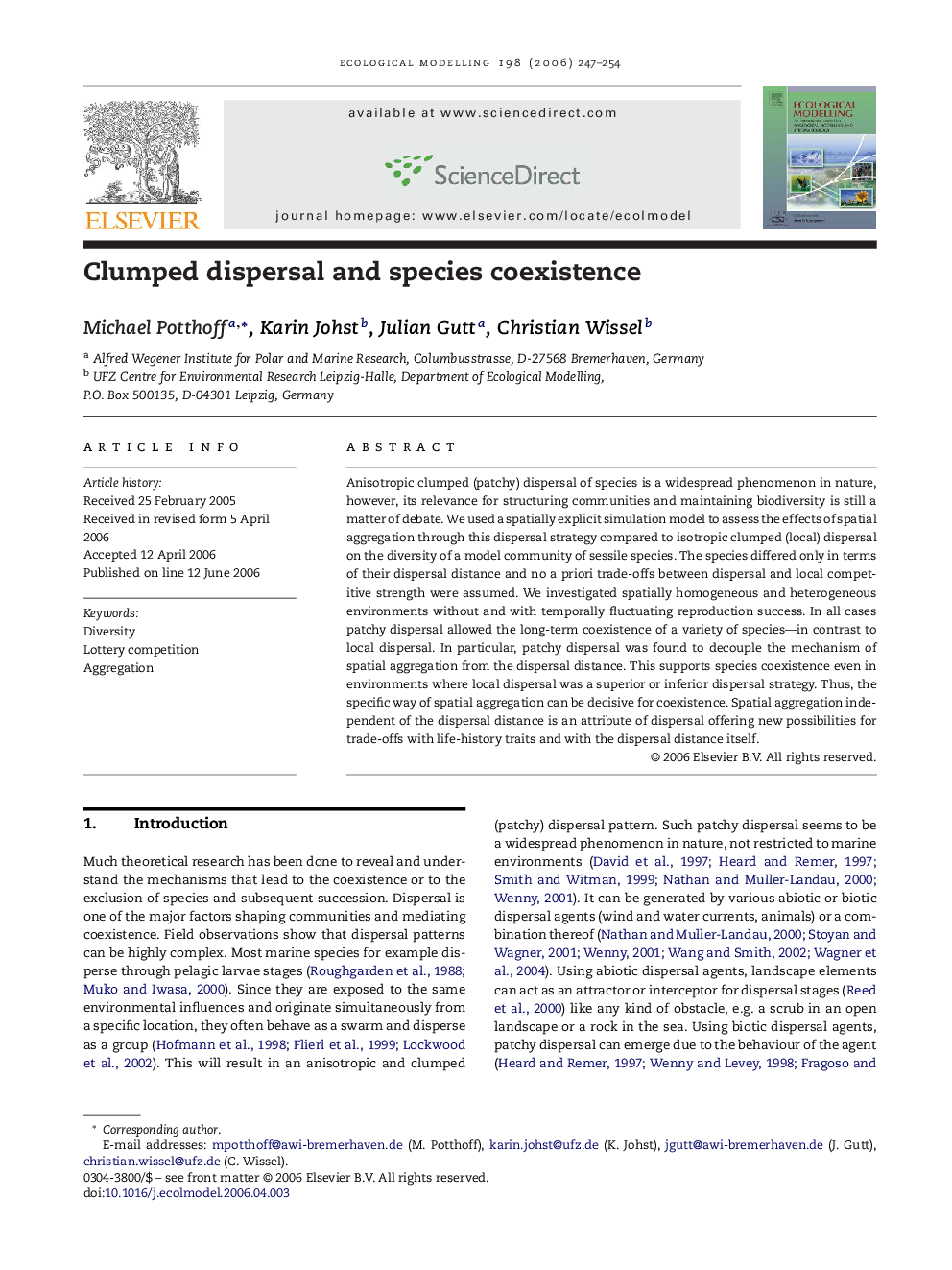| Article ID | Journal | Published Year | Pages | File Type |
|---|---|---|---|---|
| 4378852 | Ecological Modelling | 2006 | 8 Pages |
Abstract
Anisotropic clumped (patchy) dispersal of species is a widespread phenomenon in nature, however, its relevance for structuring communities and maintaining biodiversity is still a matter of debate. We used a spatially explicit simulation model to assess the effects of spatial aggregation through this dispersal strategy compared to isotropic clumped (local) dispersal on the diversity of a model community of sessile species. The species differed only in terms of their dispersal distance and no a priori trade-offs between dispersal and local competitive strength were assumed. We investigated spatially homogeneous and heterogeneous environments without and with temporally fluctuating reproduction success. In all cases patchy dispersal allowed the long-term coexistence of a variety of species-in contrast to local dispersal. In particular, patchy dispersal was found to decouple the mechanism of spatial aggregation from the dispersal distance. This supports species coexistence even in environments where local dispersal was a superior or inferior dispersal strategy. Thus, the specific way of spatial aggregation can be decisive for coexistence. Spatial aggregation independent of the dispersal distance is an attribute of dispersal offering new possibilities for trade-offs with life-history traits and with the dispersal distance itself.
Keywords
Related Topics
Life Sciences
Agricultural and Biological Sciences
Ecology, Evolution, Behavior and Systematics
Authors
Michael Potthoff, Karin Johst, Julian Gutt, Christian Wissel,
